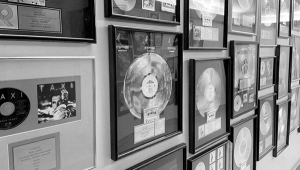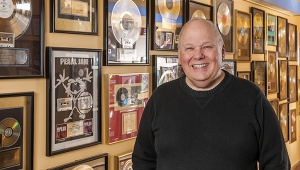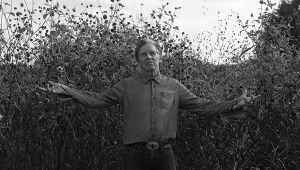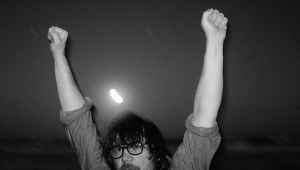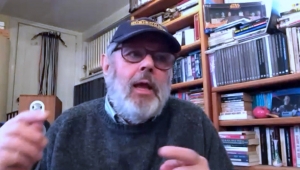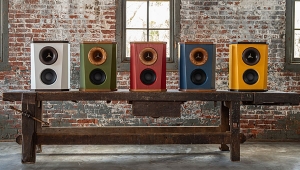| Columns Retired Columns & Blogs |
Judy Spotheim: Seeing & Hearing The Light
Judy Spotheim, maker of the SpJ arm and the gorgeous La Luce turntable that I reviewed a while back for Stereophile (October 1998) and that has subsequently become one of my references for LP playback. She's an intelligent, well-read individual who has a penchant for asking me, "You didn't read that in the manual?!" Ahem. Although the following interview was taped on the phone from her home in the Netherlands, I hope to meet her sometime soon.
Jonathan Scull: Your full name is Spotheim-Koreneeff, and you're originally from Israel. Did you live there before moving to the Netherlands?
Judy Spotheim: Yes, I lived in Tel Aviv, and my late husband was Dutch, so now I am living in Eindhoven, Holland.
Scull: So Judy...what drove you to it? What prompted you to design La Luce?
Spotheim: Oh, that is quite easy. [laughs] I was using at the time a turntable made in the United States by a very well-known manufacturer. I won't use any names. It was not giving me the results I wanted, no matter how many flywheels I used to turn the platter. About that time a friend of mine from Belgium who has one of my tonearms decided to upgrade his turntable. I tried to pull a few strings to help him—could they look favorably on the order and have it processed quickly, and so on. It was supposed to be one of the best turntables in the world, my friend assured me. But we waited and waited, and nine months passed—just like a pregnancy!—but no turntable. I was feeling very embarrassed, so I asked him if he was willing to wait another couple of weeks because it would be quite easy for me to design a turntable for him.
Scull: "Easy" to design a turntable?!
Spotheim: Oh, yes, very easy. I designed it in two or three hours, actually. I understood the principles and I knew what I was looking for. And I knew that it should be as simple as possible—no frills—and that it should be technically very reliable.
Scull: The tonearm took a little more time?
Spotheim: Yes, that took quite some time—about six months. It's a much more complicated device than the turntable.
Scull: You were dissatisfied with "commercial" efforts?
Spotheim: Well, I've had so many problems in my audiophile life with tonearms and turntables. And living in Israel, you couldn't just pick up the phone and order every other week another one! They are very expensive to import. So in Israel you always have to work around problems that you encounter. You have to make variations on a theme, you might say.
Scull: Okay, Judy, I accept that in Israel one has to make do. But it's still rare for someone to just sit down and design a turntable—especially one so striking, technically accurate, and fine-sounding as your own.
Spotheim: Thank you. But you know, the wife of my friend who wanted the turntable was a ballet dancer. A very musical family, very particular that things should look nice. I am, too, but to a lesser degree. But I understood what she wanted and promised her it wouldn't be an ugly black box but instead something like a sculpture, nice-looking, with a nice feel too.
Scull: When do you do your best work?
Spotheim: Usually the good ideas come to me in the night. When I was designing the tonearm I slept with a pad and pen near my bed. I let my subconscious continue working as I slept. That's quite common, you know. When you should write a book, for example, all of a sudden in the middle of the night you find the right word to express an idea. And you must wake up and write it down! Otherwise, in the morning you will surely forget it. That's how I came up with the solution for the azimuth adjuster.
Scull: The traveling pivot?
Spotheim: Yes.
Scull: When I first realized how the traveling pivot worked, I was intrigued. And I was floored by the sound. It obviously works.
Spotheim: Thank you. I registered a patent on it, you know.
- Log in or register to post comments

